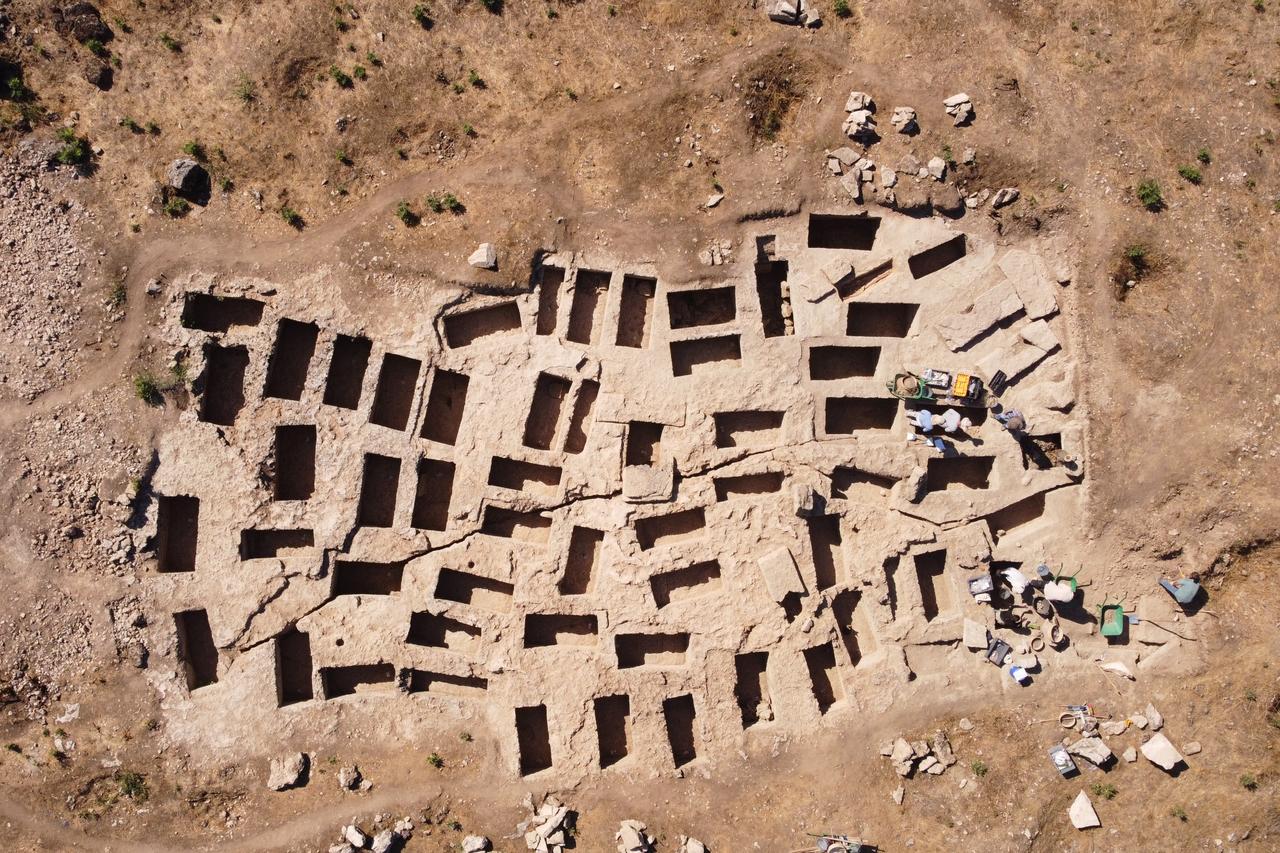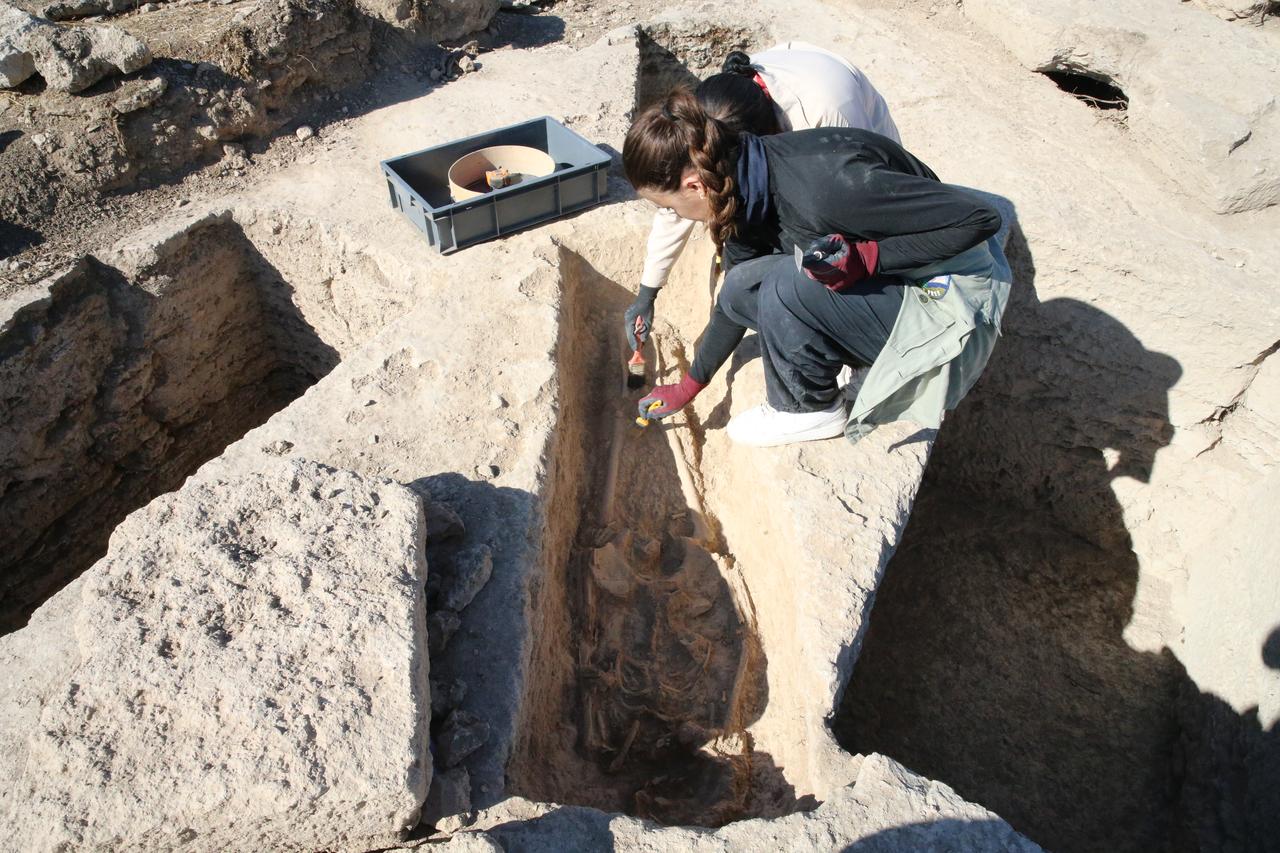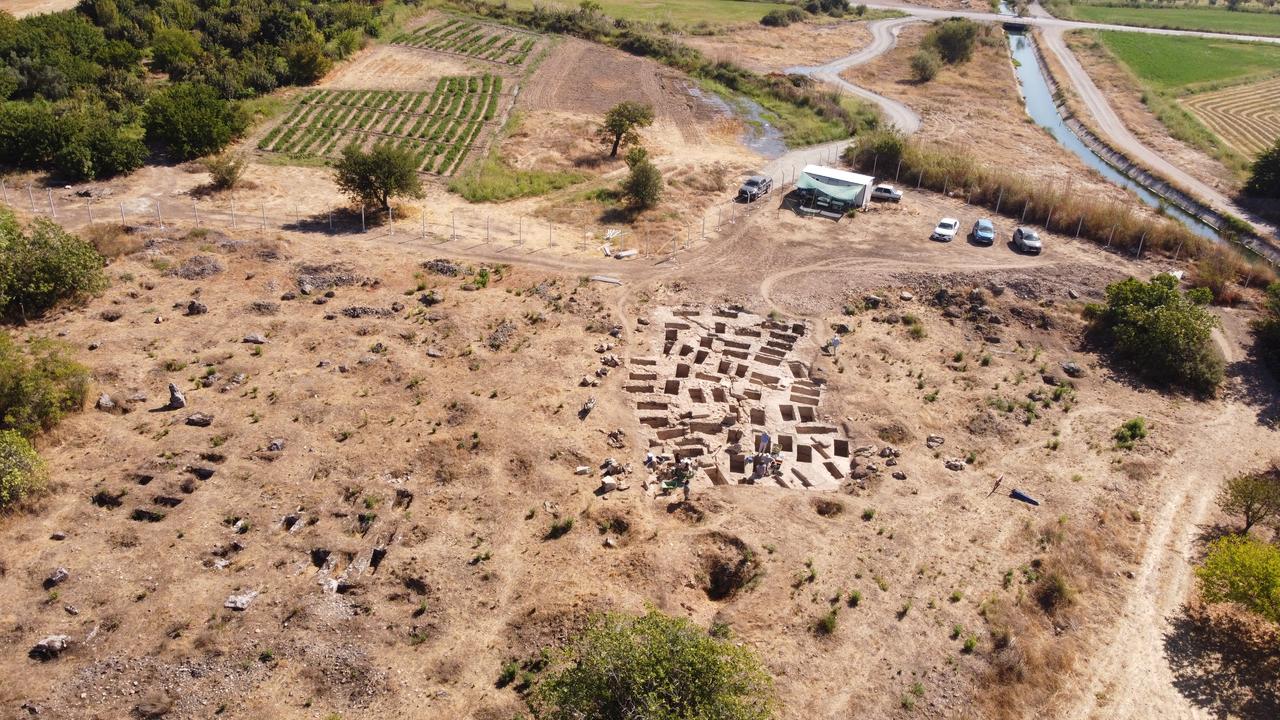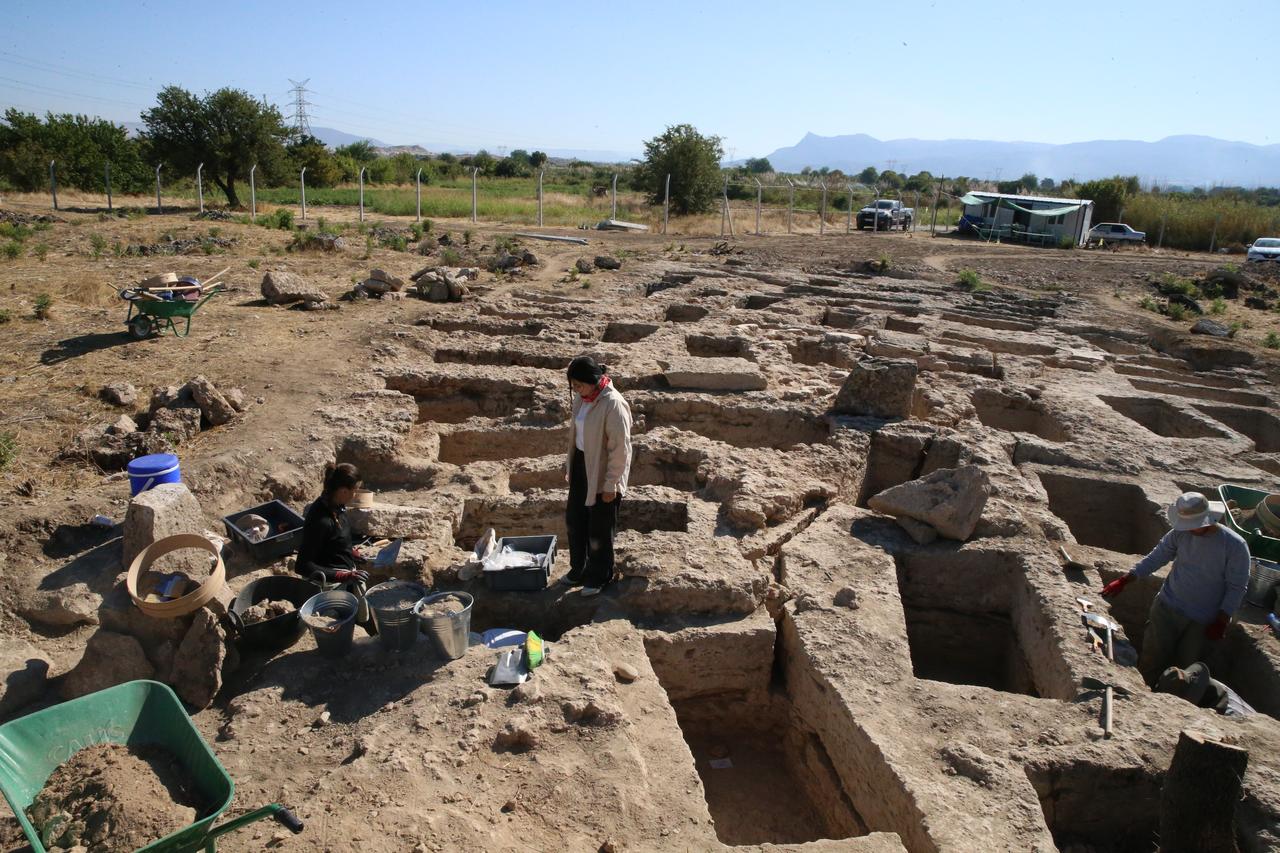
Archaeologists in southwestern Türkiye have unearthed a vast burial field of 60 rock-cut “bathtub-type” tombs in the ancient city of Colossae, marking a major milestone in the site’s first-ever excavations. The graves, carved side by side into the travertine rock near Honaz in Denizli province, date back around 2,200 years and still contain skeletal remains.

Founded around the sixth century B.C., Colossae (also known as Kolossai) was once an important trade hub famous for its fine wool and textiles. The city retained its prestige under the Persian Empire and later became a significant center for early Christianity during the Roman and Byzantine periods. However, after the nearby cities of Laodicea and Hierapolis flourished, Colossae gradually declined. A devastating earthquake in the first century A.D. caused severe damage, and the settlement was eventually abandoned after another major quake in the eighth century A.D.
The city was later reestablished nearby as “Chonae”—corresponding to today’s Honaz—but the original settlement was left to time. Archaeological surveys over the past three years traced its roots as far back as the Chalcolithic period (Copper Age, between 5,000 and 3,000 B.C.), leading to the launch of the first systematic excavations led by Baris Yener of Pamukkale University’s Department of Archaeology.

The discovery of dozens of tombs carved directly into stone has generated considerable excitement among archaeologists. These “rock-cut bathtub-type” tombs—typically rectangular cavities shaped to fit the human body—were found only a short distance beneath the surface. Measuring roughly 1.8 meters in length and up to 1.5 meters in depth, they form what Yener describes as one of the largest examples of its kind in Anatolia.
“After removing the surface soil, we uncovered about 65 tombs, of which we excavated 60,” he said. “We found skeletal fragments and valuable data that will help us understand the burial practices of Colossae’s ancient inhabitants.”
According to Yener, the people of the time made clever use of the natural terrain. “They chose a travertine rock area for burials to save arable land for farming,” he explained, noting that this geological adaptation reflects both practicality and planning in the ancient community.

Beyond its architectural layout, the cemetery also sheds light on the spiritual life of the ancient population. Many of the finds point to a strong belief in protective magic and charms. “The findings show that people in Colossae placed great importance on amulets, talismans, and healing stones,” said Yener. “These items reveal their desire to protect themselves spiritually, and how daily religious practices were intertwined with funerary rituals.”
Objects discovered among the graves include clay and glass bottles, oil lamps believed to have been left to “illuminate the darkness” of the afterlife, coins, and personal belongings such as sandals. Each detail helps piece together the community’s view of death, faith, and the continuation of life beyond the grave.
The excavations are being carried out under the Turkish Ministry of Culture and Tourism’s Heritage for the Future Project. The 20-decare (2-hectare) necropolis has been fenced off for protection, and surveillance cameras have been installed to prevent looting or damage.
Yener and his team aim to continue uncovering Colossae’s layers, which bridge a long historical gap—from the late Chalcolithic period through the Turkification of Honaz in 1,206 A.D. “Colossae helps us trace an unbroken cultural sequence across thousands of years,” he said.